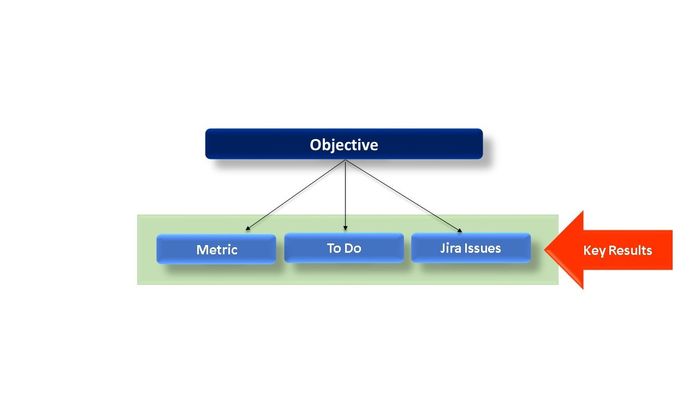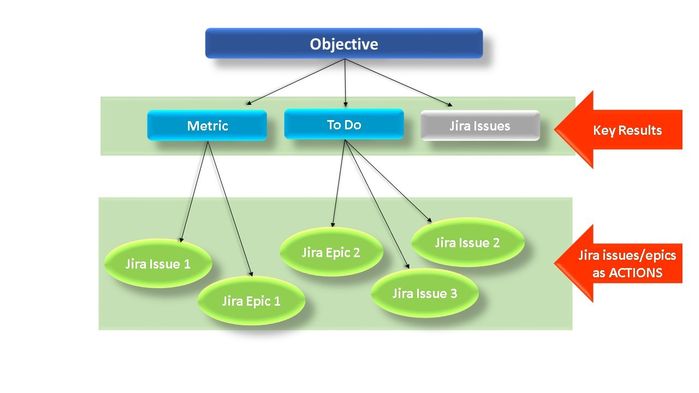Background
OKRs are now used as a surefire goals management strategy in many industries. A lot of companies have incorporated it as their game plan for achieving goals at different levels like company, team or individual. Although a lot of directives related to OKRs strategy are available by experts on the web, it's nothing like they are not set in stone. Each company may have their own rules or ways to look at their goal-setting strategy. UpRaise also has two different approaches when it comes to associating Jira issues as KRs within objectives.
Upraise's tight integration with Jira allows you to add Jira issues and epics as KRs within your objectives. There are two approaches of linking Jira issues with objectives.
- Jira issues as KRs
- Jira issues as Actions for KRs
Jira issues as KRs
This was the very first approach of UpRaise since it was introduced on the marketplace. This approach has been received positively by 75% - 80% of UpRaise users as they find it most superficial way to manage OKRs. If you look at image below, there are only two layers in the OKR hierarchy, i.e. Objective and Key Results. Take a look at When to use each type of KR - To do, Metric, Jira Issue? to know more about KRs.
So in this approach, Jira issues or epics can be added as a key result which in turn will have an impact on objective progress. UpRaise allows you to configure Jira issues and epics in a way so the progress calculations can be done on the basis of Jira issues & subtasks within the Jira epics or subtasks within the Jira issues. Read How does the progress calculation of Jira issues and epics works?
This approach allows you to track the progress of Jira issues separately as KRs within your objectives & with an impact on your objectives. Whereas other types of KRs i.e. metric and to do remain as separate entities.

Jira issues as Actions for KRs
From the release update of v3.8.3 of Upraise, we have added another approach of adding Jira issues as 'actions' for KRs. Around 20% to 25% of UpRaise users had suggested this. This approach allows you to add Jira issues or epics as actions within metric and to do type KRs. These actions will not have any impact on the progress of metric or to do, however, they will play a role of an influencer of KRs.
Example - You have a metric KR that says 'Reduce page loading time by 5 seconds'. To reduce the page loading time you will have some issue within your Jira, that particular Jira issue can be added as an action within the metric KR. Whatever changes are made in the Jira issue status, will be auto-updated in Upraise thought it will not have any progress impact on metric nor objective.
This is a typical example of metric and Jira issue, however, the metric can be anything related to your technical and nontechnical projects and it allows you to add Jira issues and epics as actions from different projects at a time. Take a look at the image below to understand the hierarchy of the objective when the configuration is set to true to link Jira issues as actions.
